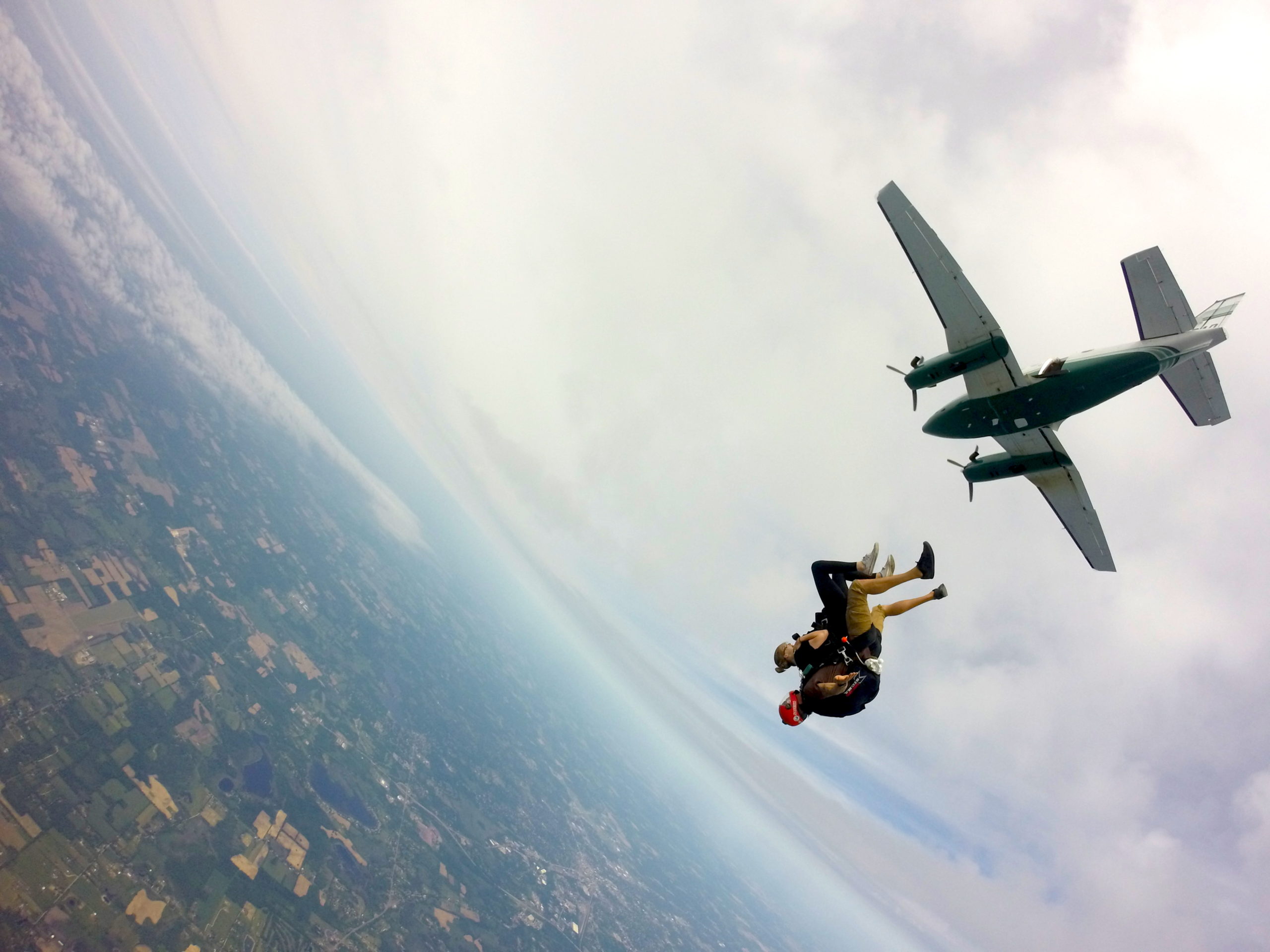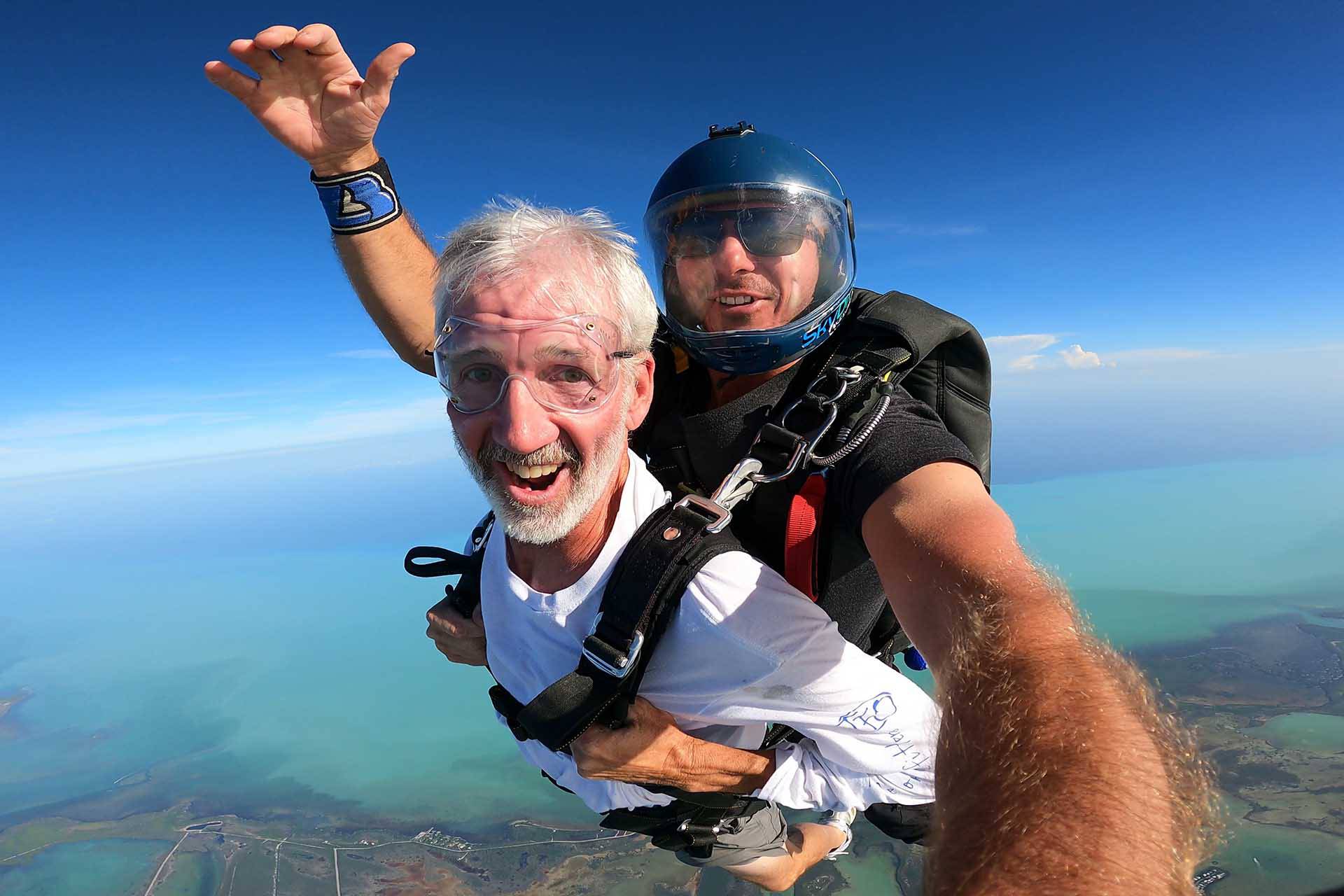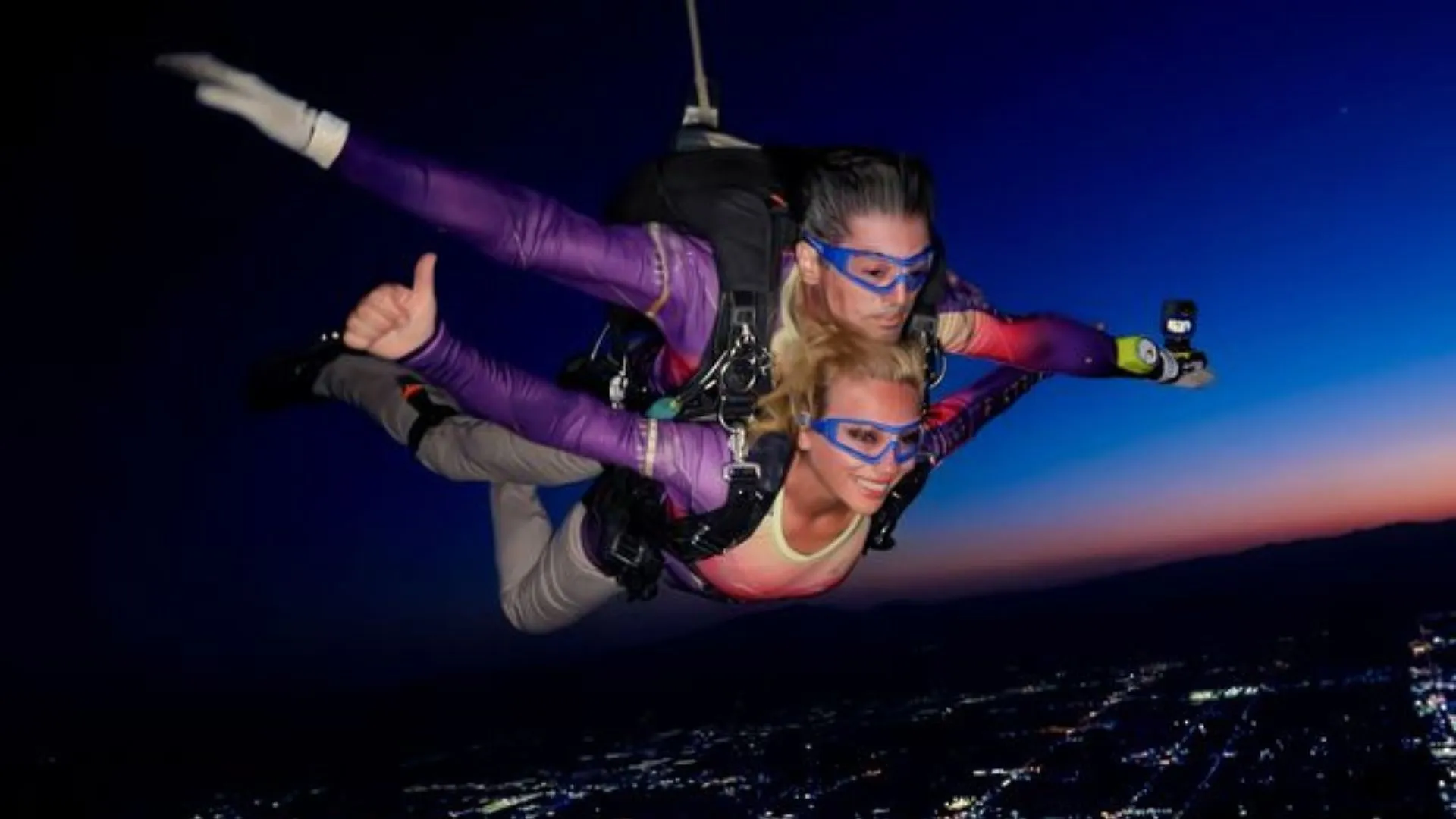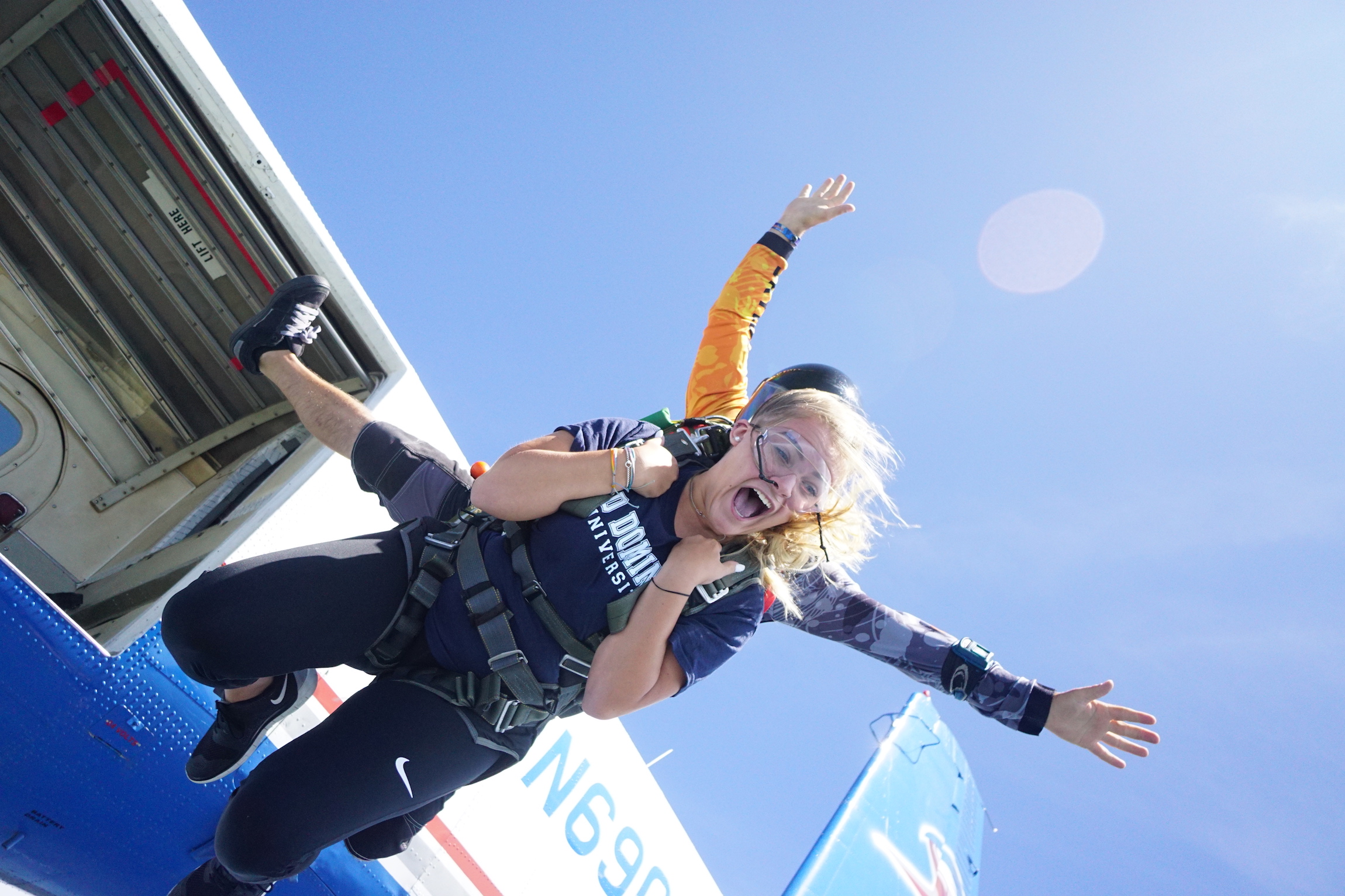Have you ever wondered how high skydivers actually jump from the sky? The height of a parachute jump can vary dramatically — from thrilling 10,000-foot tandem jumps to record-breaking leaps from the edge of space! Whether you’re a skydiving beginner, adventure traveler, or thrill-seeker, understanding jump heights gives you a whole new appreciation for this heart-pounding sport.
- 1. What Is the Average Height of a Parachute Jump?
- 2. How High Can You Skydive? Understanding Extremes
- 3. Minimum and Maximum Heights for Skydiving
- 4. Skydiving Heights in India
- 5. How Skydiving Height Affects Your Experience
- 6. Skydiving Height and Weight Restrictions
- 7. Safety Tips Before Your First Jump
- Frequently Asked Questions (FAQs)
- Conclusion
In this guide, you’ll learn about average parachute jump heights, extreme altitude jumps, India’s skydiving regulations, and fascinating facts that reveal why altitude matters more than you think.
1. What Is the Average Height of a Parachute Jump?
Most recreational skydivers jump from 10,000 to 14,000 feet (about 3,000 to 4,200 meters) above the ground. This range provides the perfect balance of freefall time and safety.
| Type of Jump | Typical Height (Feet) | Typical Height (Meters) | Average Freefall Time |
|---|---|---|---|
| Tandem Skydive (Beginner) | 10,000 – 14,000 ft | 3,000 – 4,200 m | 40–60 seconds |
| Solo Jump (Experienced) | 12,000 – 15,000 ft | 3,700 – 4,500 m | 45–70 seconds |
| HALO / Military Jump | 25,000 – 35,000 ft | 7,600 – 10,600 m | 90+ seconds (requires oxygen) |
During a typical 13,000-foot jump, you’ll experience around one minute of freefall before the parachute opens — long enough to feel pure adrenaline yet short enough to stay completely safe.
2. How High Can You Skydive? Understanding Extremes
Maximum Height for Skydiving
While 15,000 feet is already considered high, some professional jumpers go much further. Extreme skydives can take place at 30,000 to 40,000 feet, requiring supplemental oxygen and special equipment.
The world record for the highest parachute jump belongs to Alan Eustace, who leapt from 135,908 feet (41,425 meters) in 2014, wearing a pressurized suit!
Is a 15,000 ft Skydive High?
Yes — 15,000 feet is considered very high for a recreational jump. At that altitude, your freefall time can exceed 70 seconds, and you may need oxygen during the climb. It’s a once-in-a-lifetime experience for thrill-seekers looking for an extra rush.
Can You Skydive from 30,000 Feet?
Absolutely — but only under specific conditions. Jumps from 30,000 feet are known as HALO (High Altitude, Low Opening) skydives. These are typically reserved for military or professional skydivers because they require oxygen tanks, thermal suits, and specialized aircraft.
3. Minimum and Maximum Heights for Skydiving
Every skydive has safety height limits to ensure parachute deployment time and adequate freefall experience.
| Jump Type | Minimum Height | Maximum Safe Height | Notes |
|---|---|---|---|
| Tandem Jump | 8,000 ft (2,400 m) | 15,000 ft (4,500 m) | Most common for beginners |
| Solo Jump | 3,500 ft (1,000 m) | 18,000 ft (5,500 m) | Depends on experience |
| HALO Jump | 25,000 ft (7,600 m) | 40,000 ft (12,000 m) | Requires oxygen & gear |
Below 3,000 feet, a safe freefall is nearly impossible — so minimum jump heights are regulated worldwide.
4. Skydiving Heights in India
If you’re wondering about the height of parachute jump in India, most drop zones offer jumps from 10,000 to 13,000 feet (3,000 to 4,000 meters).
Popular skydiving locations in India include:
- Mysuru, Karnataka – around 10,000 ft (tandem jumps)
- Aamby Valley, Maharashtra – up to 13,000 ft (solo & tandem)
- Deesa, Gujarat – training jumps from 10,000–12,000 ft
All these centers follow DGCA (Directorate General of Civil Aviation) safety regulations, ensuring that jump heights remain both thrilling and secure.
5. How Skydiving Height Affects Your Experience
Your jump height determines more than just how long you fall — it affects speed, temperature, oxygen levels, and the overall thrill.
| Factor | Low Height (~8,000 ft) | Medium Height (~12,000 ft) | High Altitude (~15,000+ ft) |
|---|---|---|---|
| Freefall Duration | 30–40 seconds | 50–60 seconds | 70+ seconds |
| Temperature | Warmer | Moderate | Colder |
| View | Limited | Panoramic | Breathtaking horizon view |
| Adrenaline Rush | Mild | Strong | Intense |
The higher you go, the more dramatic the experience — but also the greater the preparation needed.
6. Skydiving Height and Weight Restrictions
While height defines your freefall experience, weight limits are equally important for safety. Most operators have a maximum weight of 100–110 kg (220–240 lbs) for tandem jumps.
Heavier jumpers experience slightly faster descents and may require adjusted parachute sizes. Always check with your drop zone before booking.
7. Safety Tips Before Your First Jump
- Choose a certified operator — always ensure instructors are licensed by a recognized authority.
- Ask about jump height — make sure it suits your comfort and skill level.
- Follow equipment checks — altimeter, harness, and helmet are critical.
- Hydrate and rest well before your dive for better focus.
Remember: altitude adds thrill, but preparation ensures safety.
Frequently Asked Questions (FAQs)
What is the average height of a parachute jump?
The average height of a parachute jump is between 10,000 and 14,000 feet (3,000–4,200 meters). This gives about one minute of freefall before the parachute opens.
Is a 15,000 ft skydive high?
Yes. A 15,000-foot jump is one of the highest commercial skydives available, offering nearly 70 seconds of freefall and a stunning aerial view.
Can you skydive from 4,000 feet?
You can, but it’s not a full freefall experience — that height is generally used for training or static line jumps, not tandem skydiving.
Can you skydive from 30,000 feet?
Yes, but only trained professionals or military personnel can perform HALO jumps from that altitude with oxygen gear and specialized training.
What is the maximum and minimum height for skydiving?
Most civilian jumps occur between 8,000 and 15,000 feet. Anything below 3,000 feet is unsafe for freefall, while anything above 18,000 feet needs oxygen support.
What is the height of parachute jump in India?
In India, parachute jumps typically occur from 10,000–13,000 feet, depending on the location and operator.
Conclusion
The height of a parachute jump isn’t just a number — it defines your freefall time, speed, and adventure level. Whether you’re jumping from 10,000 feet over Mysuru or dreaming of a 30,000-foot HALO dive, the sky offers endless possibilities.
So next time someone asks, “How high do skydivers jump?” — you’ll know it’s more than just altitude; it’s the ultimate measure of courage and thrill.
For more detailed insights on skydiving altitudes, check out our related guide:
👉 How High Do Skydivers Jump





